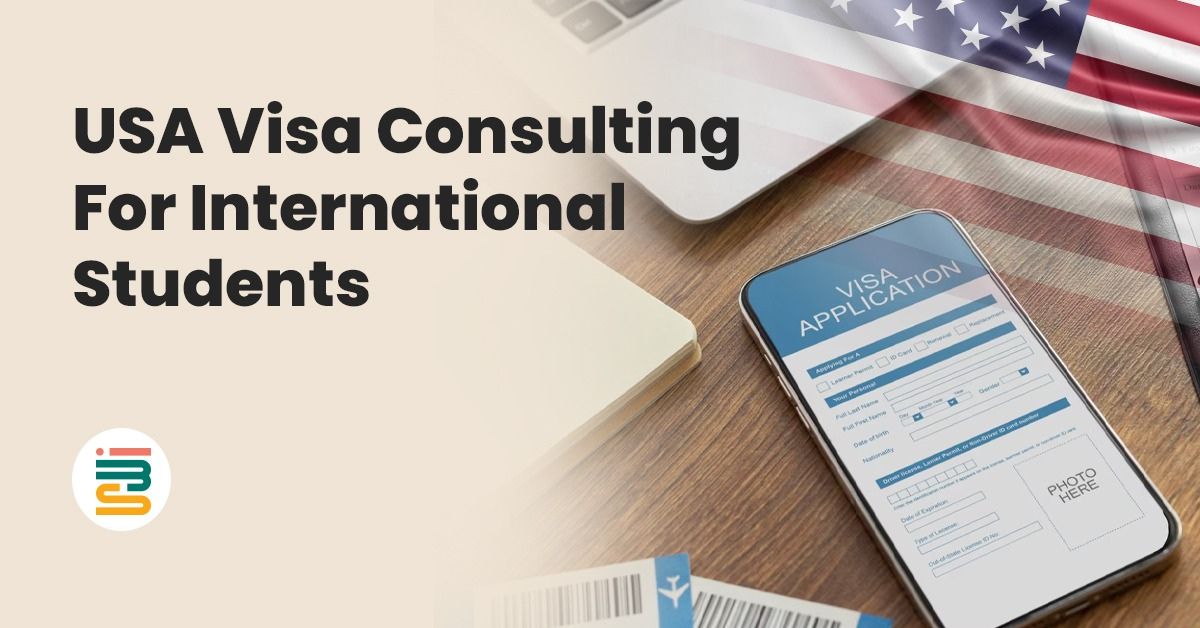EDUCATION
Documentation requirements and best practices for ISO 27001 certification

ISO 27001 certification demands comprehensive documentation that proves your organization’s commitment to information security. Without proper documentation, achieving certification becomes impossible, regardless of how robust your security measures are in practice. This requirement extends far beyond simple paperwork—it forms the backbone of your entire Information Security Management System (ISMS).
Essential documentation framework
The standard requires specific documents that auditors will scrutinize during certification assessments. Your ISMS must include documented policies, procedures, and records that demonstrate compliance with all 114 controls across 14 domains. This comprehensive approach ensures every aspect of your security program receives proper attention and verification.
Building on this foundation, policy documentation serves as the cornerstone of your certification efforts. You need an overarching information security policy approved by top management, plus supporting policies for access control, incident management, business continuity, and risk management. These policies must reflect your organization’s actual practices rather than generic templates copied from external sources.
Furthermore, risk assessment documentation proves you’ve identified threats, vulnerabilities, and impacts systematically. This includes detailed asset inventories, comprehensive threat catalogs, thorough vulnerability assessments, and strategic risk treatment plans. Auditors expect to see evidence of regular risk reviews and updates that demonstrate ongoing vigilance and adaptation to changing circumstances.
Demonstrating control implementation
Moving from policy to practice, each applicable control requires documented procedures and implementation evidence. Access control procedures must detail user provisioning processes, privilege management protocols, and access review mechanisms. Similarly, incident response procedures need clear escalation paths, defined communication protocols, and structured recovery steps that teams can follow during actual security events.
In addition to procedural documentation, training records demonstrate employee awareness and competency levels across your organization. These include security awareness sessions, role-specific training programs, and competency assessments that validate understanding. Documentation should clearly show who received training, when sessions occurred, and how effectiveness was measured and verified.
Understanding who needs iso 27001 certification helps organizations determine the scope and depth of documentation required for their specific industry and risk profile.
Structuring your documentation system
To manage this extensive documentation effectively, structure your documents hierarchically for maximum clarity and accessibility. Level 1 contains your main ISMS policy that sets organizational direction. Level 2 includes supporting policies and procedures that operationalize your security framework. Level 3 covers detailed work instructions and practical guidelines for daily operations. Level 4 contains records and evidence that prove implementation and effectiveness.
Consequently, version control prevents confusion during audits and maintains document integrity over time. Implement a systematic approach for document approval, review, and updates that ensures accuracy and currency. Each document needs clear ownership assignments, established review schedules, and robust change control processes that track modifications and their rationale.
Leveraging digital solutions
Modern organizations can significantly benefit from centralized document management systems that streamline compliance efforts. These platforms provide automated version control, granular access controls, and comprehensive audit trails that satisfy regulatory requirements while reducing administrative burden.
Moreover, automated evidence collection strengthens your documentation approach by reducing manual effort and human error. Security tools can generate reports, logs, and metrics that support your compliance claims with real-time data. This technological approach provides continuous visibility into control effectiveness while building a robust evidence base for certification.
Organizations implementing frameworks like trust service criteria soc 2 often find complementary documentation approaches that can enhance their ISO 27001 preparation.
Avoiding critical documentation mistakes
Despite best intentions, generic documentation consistently fails audit scrutiny. Avoid copying templates without substantial customization to reflect your organization’s unique environment and practices. Your documentation must demonstrate actual organizational behaviors rather than theoretical frameworks that exist only on paper.
Similarly, inconsistent documentation creates significant audit risks that can derail certification efforts. Ensure your policies, procedures, and records align with each other and present a coherent picture of your security program. Contradictory statements between documents raise serious questions about implementation effectiveness and organizational commitment.
Preparing for successful audits
As certification approaches, organize documentation logically before audits begin to demonstrate professionalism and preparedness. Create clear cross-references between related documents that help auditors understand relationships and dependencies. Prepare comprehensive evidence packages that demonstrate control implementation over extended periods rather than isolated point-in-time snapshots.
To support this preparation, regular internal reviews identify gaps before external audits and prevent last-minute discoveries. Schedule quarterly documentation reviews focusing on completeness, accuracy, and alignment with evolving business requirements. This proactive approach prevents scrambling during the certification process while building organizational confidence in your documentation quality.
Maintaining long-term effectiveness
Documentation excellence requires ongoing attention and systematic maintenance to remain valuable and current. Business changes, technology updates, and lessons learned from security incidents should trigger appropriate document reviews and updates. Establish clear triggers for modifications and assign specific responsibility for maintenance activities to ensure continuity.
Finally, performance metrics help optimize documentation processes and demonstrate continuous improvement. Track document review cycles, update frequency patterns, and audit finding trends to identify optimization opportunities. This data-driven approach helps allocate resources effectively while ensuring your documentation system evolves with organizational needs.
Effective ISO 27001 documentation balances thoroughness with practicality, focusing on documents that add genuine value to your security program while meeting certification requirements. Well-maintained documentation becomes a valuable business asset that supports strategic decision-making and demonstrates security maturity to stakeholders, clients, and regulatory bodies.
EDUCATION
Study in the USA: Application Tips from a Consultant’s Perspective

Studying in the USA is a dream for many international students due to its world-class education system, diverse culture, and numerous career opportunities. However, applying to American universities can be a complex and competitive process. From my experience working with students and study abroad consultants, I’ve gathered some valuable tips that can help you navigate the application journey smoothly and increase your chances of acceptance. In this blog, I’ll share application tips from a consultant’s perspective to guide you step-by-step.
1. Start Early and Plan Ahead
One of the most common mistakes students make is starting their application process too late. The US university application process involves multiple steps—including researching universities, preparing documents, taking standardized tests, and applying for visas—that can take months to complete. Starting early gives you ample time to gather all necessary materials, improve your test scores if needed, and avoid last-minute stress.
Study abroad consultants often emphasize the importance of early preparation because it allows students to carefully select universities that best fit their academic and personal goals rather than rushing into decisions.
2. Research Universities and Programs Thoroughly
The USA has thousands of universities offering a wide range of programs. It’s crucial to research and shortlist universities that align with your academic interests, career goals, budget, and lifestyle preferences. Don’t just focus on rankings; consider factors like faculty expertise, internship opportunities, campus culture, and location.
Consultants help students create a balanced list of universities, including “target,” “safety,” and “dream” schools. This strategy maximizes your chances of acceptance and scholarship opportunities. Applying to multiple universities also gives you options to compare offers and choose the best fit.
3. Understand and Meet Admission Requirements
Each university and program may have different admission criteria. Common requirements include academic transcripts, standardized test scores (SAT, ACT for undergraduates; GRE, GMAT for graduates), English proficiency tests (TOEFL, IELTS, or Duolingo), letters of recommendation, and a personal statement or essay.
Make sure you understand the specific requirements of each university on your list. Missing or incomplete documents can lead to delays or rejection. Study abroad consultants can guide you on how to prepare and present these documents effectively to meet university expectations.
4. Prepare a Strong Personal Statement
Your personal statement or Statement of Purpose (SOP) is your chance to tell the admissions committee who you are beyond your grades. Many students underestimate its importance or submit generic essays that don’t reflect their unique qualities or motivations.
A strong personal statement should clearly explain why you want to study your chosen program, how it fits your career goals, and why you selected that particular university. Mention any relevant experiences, achievements, or challenges that shaped your academic journey. Consultants often help students draft, review, and polish their essays to make them compelling and authentic.
5. Take Standardized Tests Seriously
Standardized tests like the SAT, ACT, GRE, or GMAT are important components of your application. Preparing well for these tests can significantly improve your chances of admission and scholarships. Also, English language proficiency tests such as TOEFL or IELTS are mandatory for most international students.
Register for these tests early and give yourself enough time to retake them if needed. Many universities also accept Duolingo English Test scores, which can be taken online and offer flexibility. Knowing the test requirements for each university helps you avoid surprises later in the process.
6. Pay Attention to Application Deadlines
US universities have different application deadlines, including early decision, early action, regular decision, and rolling admissions. Missing deadlines can mean waiting an entire year to apply again.
Create a detailed calendar with all deadlines for applications, financial aid, scholarships, and visa submissions. Starting early and staying organized is key to submitting complete and timely applications.
7. Secure Strong Letters of Recommendation
Letters of recommendation provide insight into your academic abilities, character, and potential from the perspective of teachers, counselors, or employers. Choose recommenders who know you well and can speak positively about your strengths and achievements.
Provide your recommenders with enough time and information about your goals so they can write detailed and personalized letters. Consultants often advise students on how to select recommenders and how to request letters professionally.
8. Prepare for the Visa Process
Getting a student visa for the USA (usually an F-1 visa) is a critical step after admission. The visa process requires careful preparation of documents such as your I-20 form (issued by the university), financial proof, passport, and visa application forms.
Study abroad consultants can assist you with visa application procedures, help you prepare for visa interviews, and keep you updated on any policy changes. Starting the visa process early reduces the risk of delays that could affect your travel plans.
9. Plan Your Finances Wisely
Studying in the USA can be expensive, so it’s important to plan your finances carefully. Besides tuition fees, consider living expenses, health insurance, travel costs, and personal spending.
Look for scholarships, assistantships, and financial aid options offered by universities. Study abroad consultants often help students identify scholarships they might qualify for and guide them through the application process.
10. Take Advantage of Pre-Departure Support
Before you leave for the USA, make sure you have all your documents organized, including your passport, visa, university admission letter, accommodation details, and health insurance.
Many consultants provide pre-departure briefings covering topics like travel arrangements, accommodation, banking, and cultural adjustment. This support helps reduce anxiety and ensures you are well-prepared for your new life abroad.
Final Thoughts
Applying to universities in the USA can be challenging, but with the right approach and support, you can make the process manageable and successful. Study abroad consultants play a vital role in helping students understand requirements, prepare strong applications, and navigate the complexities of admissions and visas. Their expertise can save you time, reduce stress, and increase your chances of acceptance.
By starting early, researching thoroughly, preparing carefully, and seeking expert advice when needed, you can turn your dream of studying in the USA into reality. Remember, every step you take now is an investment in your future.
EDUCATION
Study in the USA: Application Tips from a Consultant’s Perspective

Studying in the USA is a dream for many international students due to its world-class education system, diverse culture, and numerous career opportunities. However, applying to American universities can be a complex and competitive process. From my experience working with students and study abroad consultants, I’ve gathered some valuable tips that can help you navigate the application journey smoothly and increase your chances of acceptance. In this blog, I’ll share application tips from a consultant’s perspective to guide you step-by-step.
1. Start Early and Plan Ahead
One of the most common mistakes students make is starting their application process too late. The US university application process involves multiple steps—including researching universities, preparing documents, taking standardized tests, and applying for visas—that can take months to complete. Starting early gives you ample time to gather all necessary materials, improve your test scores if needed, and avoid last-minute stress.
Study abroad consultants often emphasize the importance of early preparation because it allows students to carefully select universities that best fit their academic and personal goals rather than rushing into decisions.
2. Research Universities and Programs Thoroughly
The USA has thousands of universities offering a wide range of programs. It’s crucial to research and shortlist universities that align with your academic interests, career goals, budget, and lifestyle preferences. Don’t just focus on rankings; consider factors like faculty expertise, internship opportunities, campus culture, and location.
Consultants help students create a balanced list of universities, including “target,” “safety,” and “dream” schools. This strategy maximizes your chances of acceptance and scholarship opportunities. Applying to multiple universities also gives you options to compare offers and choose the best fit.
3. Understand and Meet Admission Requirements
Each university and program may have different admission criteria. Common requirements include academic transcripts, standardized test scores (SAT, ACT for undergraduates; GRE, GMAT for graduates), English proficiency tests (TOEFL, IELTS, or Duolingo), letters of recommendation, and a personal statement or essay.
Make sure you understand the specific requirements of each university on your list. Missing or incomplete documents can lead to delays or rejection. Study abroad consultants can guide you on how to prepare and present these documents effectively to meet university expectations.
4. Prepare a Strong Personal Statement
Your personal statement or Statement of Purpose (SOP) is your chance to tell the admissions committee who you are beyond your grades. Many students underestimate its importance or submit generic essays that don’t reflect their unique qualities or motivations.
A strong personal statement should clearly explain why you want to study your chosen program, how it fits your career goals, and why you selected that particular university. Mention any relevant experiences, achievements, or challenges that shaped your academic journey. Consultants often help students draft, review, and polish their essays to make them compelling and authentic.
5. Take Standardized Tests Seriously
Standardized tests like the SAT, ACT, GRE, or GMAT are important components of your application. Preparing well for these tests can significantly improve your chances of admission and scholarships. Also, English language proficiency tests such as TOEFL or IELTS are mandatory for most international students.
Register for these tests early and give yourself enough time to retake them if needed. Many universities also accept Duolingo English Test scores, which can be taken online and offer flexibility. Knowing the test requirements for each university helps you avoid surprises later in the process.
6. Pay Attention to Application Deadlines
US universities have different application deadlines, including early decision, early action, regular decision, and rolling admissions. Missing deadlines can mean waiting an entire year to apply again.
Create a detailed calendar with all deadlines for applications, financial aid, scholarships, and visa submissions. Starting early and staying organized is key to submitting complete and timely applications.
7. Secure Strong Letters of Recommendation
Letters of recommendation provide insight into your academic abilities, character, and potential from the perspective of teachers, counselors, or employers. Choose recommenders who know you well and can speak positively about your strengths and achievements.
Provide your recommenders with enough time and information about your goals so they can write detailed and personalized letters. Consultants often advise students on how to select recommenders and how to request letters professionally.
8. Prepare for the Visa Process
Getting a student visa for the USA (usually an F-1 visa) is a critical step after admission. The visa process requires careful preparation of documents such as your I-20 form (issued by the university), financial proof, passport, and visa application forms.
Study abroad consultants can assist you with visa application procedures, help you prepare for visa interviews, and keep you updated on any policy changes. Starting the visa process early reduces the risk of delays that could affect your travel plans.
9. Plan Your Finances Wisely
Studying in the USA can be expensive, so it’s important to plan your finances carefully. Besides tuition fees, consider living expenses, health insurance, travel costs, and personal spending.
Look for scholarships, assistantships, and financial aid options offered by universities. Study abroad consultants often help students identify scholarships they might qualify for and guide them through the application process.
10. Take Advantage of Pre-Departure Support
Before you leave for the USA, make sure you have all your documents organized, including your passport, visa, university admission letter, accommodation details, and health insurance.
Many consultants provide pre-departure briefings covering topics like travel arrangements, accommodation, banking, and cultural adjustment. This support helps reduce anxiety and ensures you are well-prepared for your new life abroad.
Final Thoughts
Applying to universities in the USA can be challenging, but with the right approach and support, you can make the process manageable and successful. Study abroad consultants play a vital role in helping students understand requirements, prepare strong applications, and navigate the complexities of admissions and visas. Their expertise can save you time, reduce stress, and increase your chances of acceptance.
By starting early, researching thoroughly, preparing carefully, and seeking expert advice when needed, you can turn your dream of studying in the USA into reality. Remember, every step you take now is an investment in your future.
Good luck on your journey!
EDUCATION
BOOST Circuit

-
Basic working principle
When switch SW1 is closed, current flows out from the power supply VIN, and the path is: VIN→L1→SW1→GND. At this time, the inductor stores magnetic energy (the current gradually increases), and the capacitor C2 supplies power to the load (maintaining the VOUT voltage).
When SW1 is turned off, the current in the inductor cannot change suddenly. In order to maintain the current size, an induced electromotive force (polarity is negative on the left and positive on the right) is generated at both ends of the inductor. The inductor voltage is superimposed in series with the power supply voltage, charging the capacitor C2 through the diode D1, and supplying power to the load at the same time. At this time, the VOUT voltage is raised to a level higher than VIN.
-
Key parameters of circuit design
2.1 Selection and calculation of inductor
In the BOOST boost circuit, the selection of inductor is crucial to the circuit working mode, output voltage stability and efficiency. The inductance value and saturation current should be considered in particular: the inductance value determines the current change rate. If it is too high, the startup time will be prolonged. If it is too low, the current may drop to zero quickly when the switch element is turned off and enter the discontinuous conduction mode (DCM); the saturation current of the inductor must be greater than the maximum current (including steady-state peak current and transient spike current) when the circuit is working normally to prevent saturation from causing inductance performance degradation and causing overcurrent and other faults.
The calculation of the inductance value is usually based on the following formula (∆IL is the change in inductor current). The actual value should be 30%-50% larger than the theoretical value to leave enough design margin:

2.2 Selection and calculation of output filter
In the BOOST boost circuit, the output filter plays a key role in filtering out switching noise and maintaining output voltage stability. The typical output filter consists of an output capacitor and a sensing resistor. The main parameter selection points are as follows: The output capacitor capacity needs to determine the minimum capacity based on the required ripple voltage to suppress voltage fluctuations through sufficient charging and discharging capacity; the lower the equivalent series resistance, the better the filtering effect and the longer the capacitor life, which can effectively reduce the high-frequency component in the ripple voltage; the sensing resistor value needs to be as small as possible to achieve accurate measurement of the output current while reducing power loss and balancing measurement accuracy and energy efficiency.
The calculation formula for the output capacitor is (∆VOUT is the allowable ripple of the output voltage). The actual value should be 30%-50% larger than the theoretical value to leave enough design margin:

-
Working mode
Depending on whether the inductor current is continuous, the BOOST circuit can be divided into the following three working modes:
3.1 CCM continuous conduction mode
The working process is: when the switch is turned on, the diode is reverse biased and cut off, the input power charges the inductor, the inductor current increases linearly, and the load is powered by the output capacitor; when the switch is turned off, the inductor discharges to the load and capacitor through the diode, the inductor current decreases linearly but remains positive, and the output capacitor is charged at the same time, and its voltage conversion relationship is Vout = Vin / (1 – D) (D is the duty cycle, the value range is 0 < D < 1).
The conditions that need to be met are:

3.2 BCM critical conduction mode
Since the inductor current has dropped to zero before the switch tube is turned on, zero current switching (ZCS) can be achieved, effectively reducing switching losses and having certain advantages in improving circuit efficiency and reliability.
The conditions that need to be met are:

3.3 DCM discontinuous conduction mode
Its working characteristics are: the inductor current will drop to zero in each switching cycle, which is suitable for light load or low current conditions, and the control characteristics are highly nonlinear.
The conditions that need to be met are:

-

 TECHNOLOGY2 years ago
TECHNOLOGY2 years agoElevating Game Day Eats: A Guide to Crafting Crowd-Pleasing Sliders
-

 ENTERTAINMENT2 years ago
ENTERTAINMENT2 years agowave_of_happy_: Your Ultimate Guide
-

 FASHION2 years ago
FASHION2 years agoGPMsign Fashion: Redefining Style with Purpose
-

 TECHNOLOGY1 year ago
TECHNOLOGY1 year agoTrader Joe’s Dayforce: Revolutionizing Workforce Management
-

 FOOD2 years ago
FOOD2 years agoAltador Cup Food Court Background: A Culinary Extravaganza Unveiled
-

 SPORTS2 years ago
SPORTS2 years agoScore Chaser Sporting Clays: A Thrilling Pursuit of Precision
-

 HOME IMPROVEMENT1 year ago
HOME IMPROVEMENT1 year agoWhat Kitchen Renovation Companies Offer Beyond Basic Remodeling
-

 NEWS2 years ago
NEWS2 years agoNyl2 Kemono: Unveiling the World
